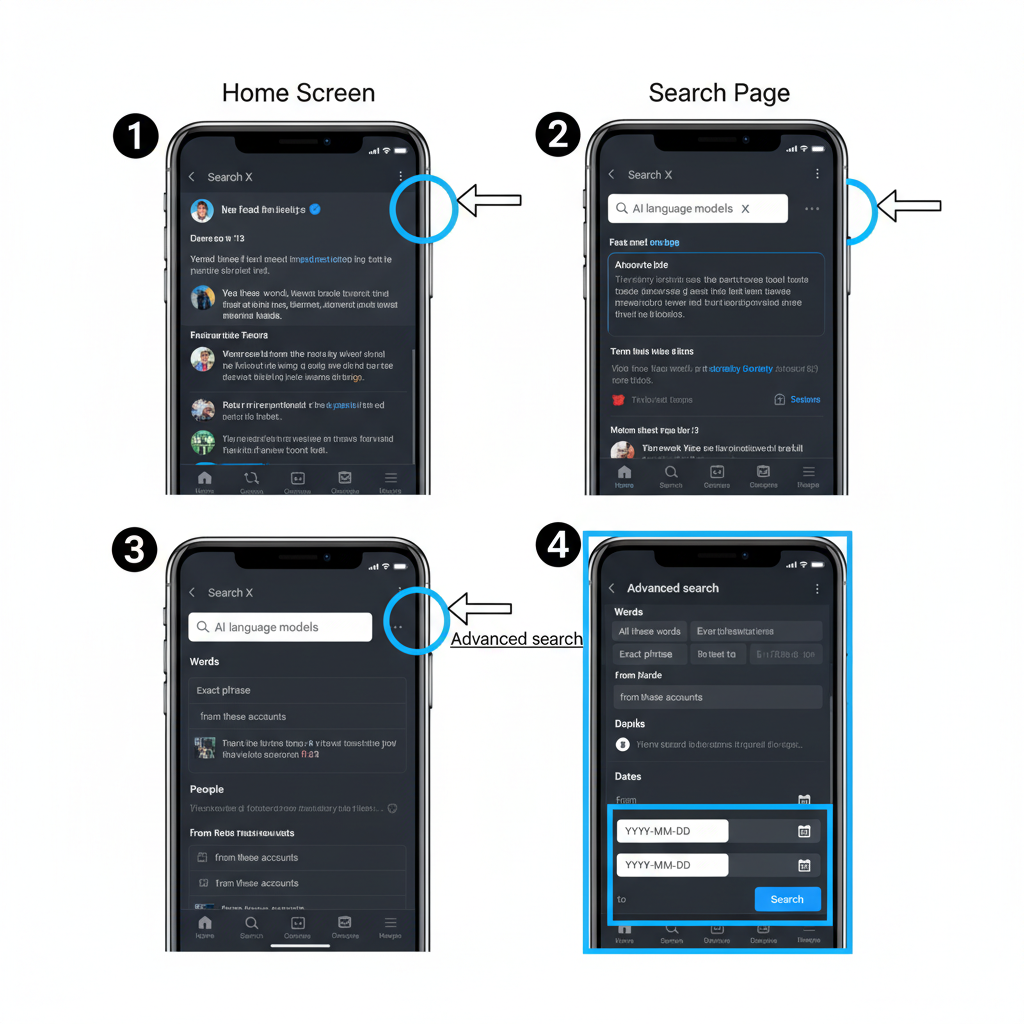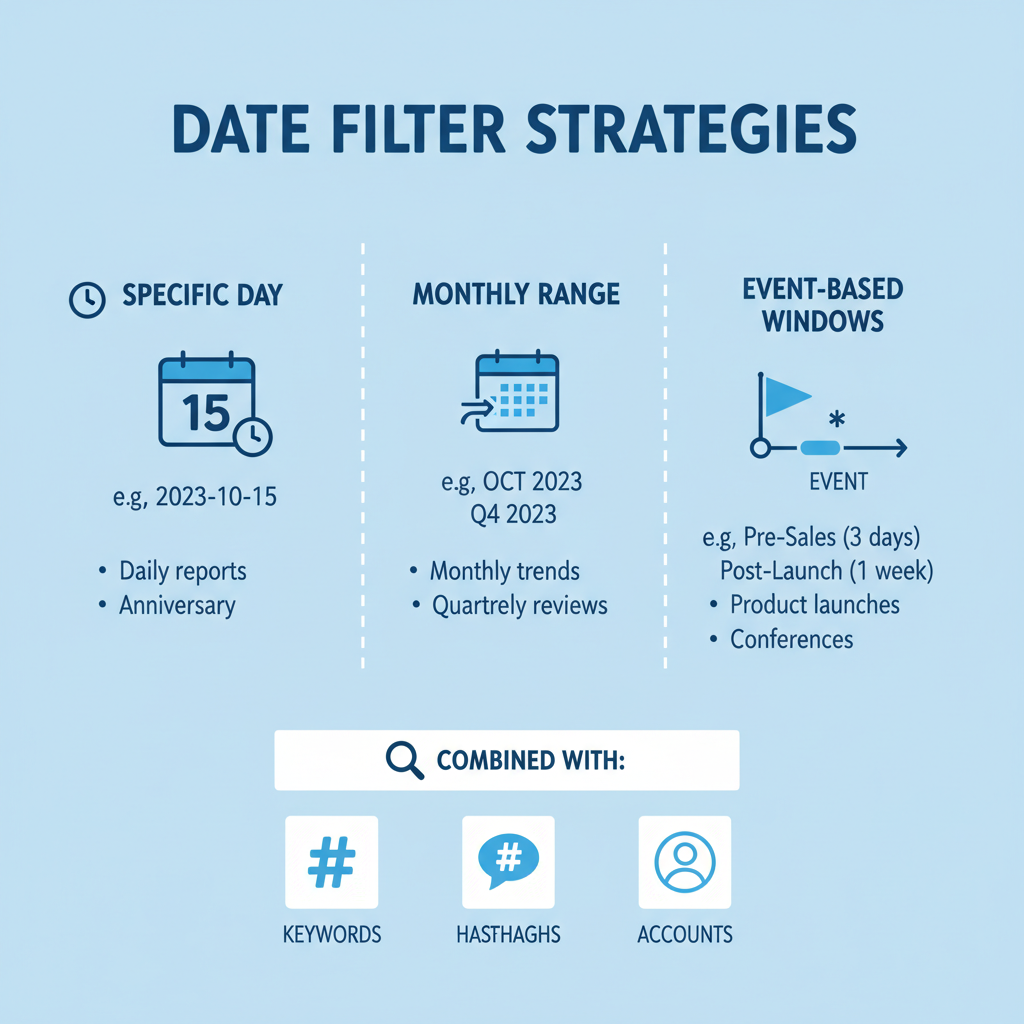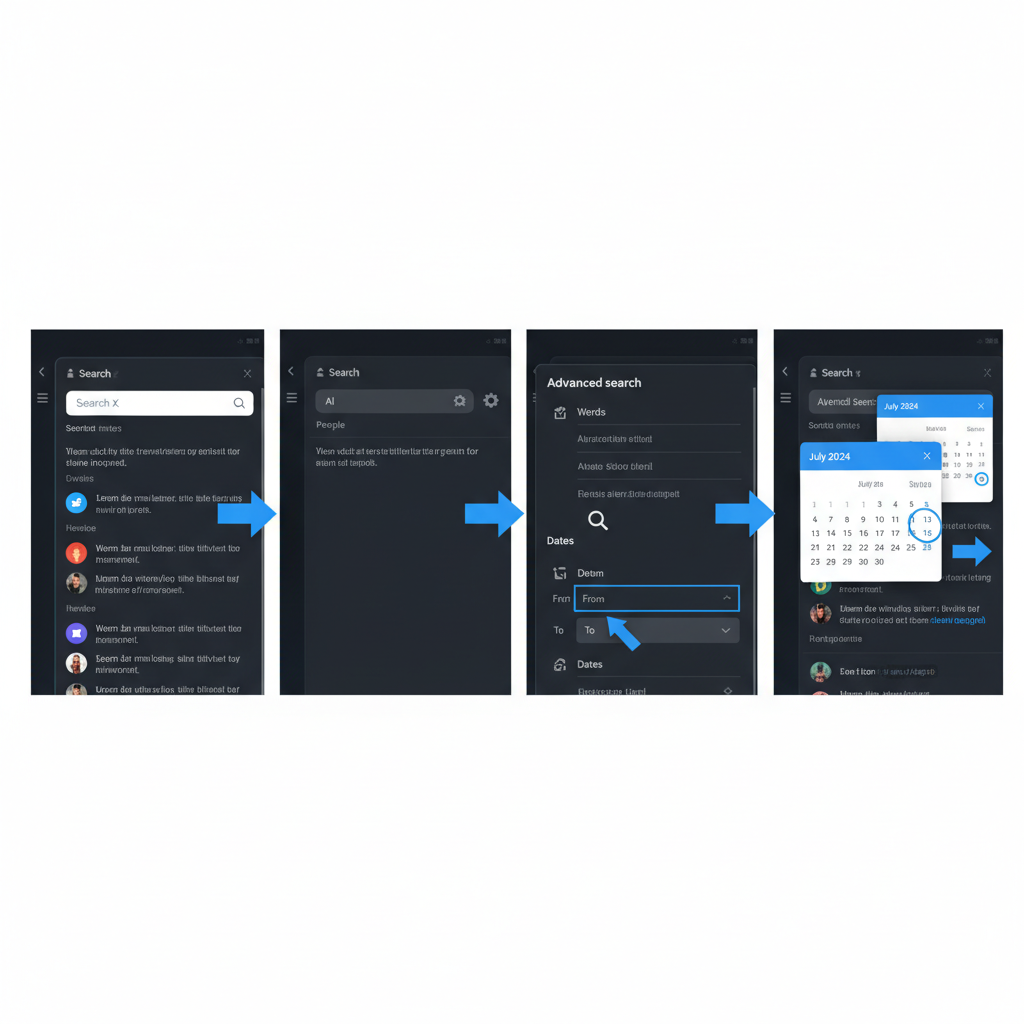Twitter Advanced Search Date Filters Guide
Learn how to use Twitter Advanced Search date filters to find tweets in specific timeframes, track events, analyze trends, and refine research.

Introduction to Twitter Advanced Search Date Filters
Twitter is more than just a fast-moving social media stream — it’s a vast, searchable archive of real-time conversations, breaking news, and cultural moments. For journalists, researchers, marketers, and even casual users, Twitter Advanced Search date filters provide a powerful way to pinpoint tweets within specific timeframes without wasting time scrolling through irrelevant results.
Using these date-based search features, you can uncover discussions tied to historic events, track campaign performance, or revisit conversations from months or years past. With just a few clicks, Twitter’s advanced tools turn the platform into a targeted research engine.

Overview of Date Filters in Twitter Advanced Search
While keywords, accounts, and hashtags help narrow Twitter search results, date filters provide precise control over time ranges. This enables you to set boundaries such as a start date, end date, or both, ensuring that only tweets posted within your chosen window appear.
Typical use cases include:
- Retrieving tweets during breaking news events.
- Analyzing historical sentiment trends.
- Monitoring hashtag usage during a campaign.
- Reviewing discussions during product launches.
By using the "From these dates" fields alongside other criteria, searches become hyper-specific and actionable.
Step-by-Step Guide to Accessing Twitter Advanced Search
Getting to the advanced search interface differs depending on whether you are on desktop or mobile.
Desktop:
- Log in to your Twitter account.
- Type a keyword into the search bar and press Enter.
- On the results page, click the three-dot filter icon and choose Advanced Search.
- Or go directly to: `https://twitter.com/search-advanced`
Mobile:
The mobile app does not offer the full advanced search form, but you can replicate many functions using search operators directly in the search bar.

How to Use the "From These Dates" Option
Inside the advanced search form’s Dates section, you’ll see:
- From: The earliest date to include (YYYY-MM-DD format).
- To: The latest date to include (YYYY-MM-DD format).
You can:
- Enter only a start date to include tweets from that day onward.
- Enter only an end date to limit tweets up to that day.
- Use both for a fixed start and end period.
Example
Search for “Mars rover” between July 7, 2021, and July 10, 2021:
- Words: `Mars rover`
- Dates: From = 2021-07-07, To = 2021-07-10
Twitter will show only tweets within this exact range.
Combining Date Filters with Keywords, Hashtags, and Accounts
The true potential of date filters unfolds when paired with other fields:
- Keywords: Isolate tweets by subject matter.
- Hashtags: Explore tagged conversations during specific timeframes.
- Accounts: Limit results to tweets from or to selected users.
Example combination:
Find tweets from `@NASA` containing `#Artemis` between Nov 15–20, 2022.
- Account field: `From these accounts` → nasa
- Hashtags field: `#Artemis`
- Dates: From = 2022-11-15, To = 2022-11-20
Result: A focused snapshot of campaign activity during those days.
Examples: Searching by Specific Day, Month, or Event Window
| Scenario | Search Setup | Expected Outcome |
|---|---|---|
| Specific day | From = 2023-03-05, To = 2023-03-05 | Only tweets from March 5, 2023 |
| Full month | From = 2023-03-01, To = 2023-03-31 | All tweets in March 2023 |
| Event window | From = 2022-11-20, To = 2022-11-25 | Tweets during the five-day event |
Fine-tuning dates lets you analyze sentiment or tweet volume across exact periods.

Pro Tips for Tracking Events and Trends
To optimize your date-based Twitter searches:
- Verify time zones: Twitter timestamps are typically UTC, which may differ from your local time.
- Use both dates: Narrow ranges avoid excessive irrelevant results.
- Integrate analytics: Pair searches with sentiment tools for deeper insights.
- Save searches: Keep reusable queries in Twitter’s “Saved searches.”
- Add location filters: Gain regional context alongside time filters.
Using Search Operators for Date Filtering
You can apply search operators directly in the standard search bar, even without the advanced form.
Basic date format:
keyword since:YYYY-MM-DD until:YYYY-MM-DDExample:
mars rover since:2021-07-07 until:2021-07-10Other useful operators:
- `from:username` — tweets by a specific account.
- `to:username` — replies to a specific account.
- `"exact phrase"` — matches the exact quoted term.
Combining operators yields precise, customizable results.
Common Mistakes to Avoid
- Wrong format — Always use `YYYY-MM-DD`.
- No end date — Might include too many tweets.
- Broad ranges — Reduce relevance and slow load times.
- Ignoring time zones — Causes confusion for global events.
- Dates without context — Pair with keywords or hashtags for meaning.
Third-Party Tools versus Native Search
| Approach | Pros | Cons |
|---|---|---|
| Native Twitter Search | Free, quick access, real-time updates | Limited history, basic analytics |
| Third-Party Tools | Advanced reporting, extended history | Subscription fees, variable accuracy |
Choose native search for speed and simplicity; opt for third-party tools when deeper historical or analytic capabilities are needed.
Privacy and Ethics in Date-Based Searches
Twitter content may be public, but responsible use is essential:
- Avoid harassment or misuse of data.
- Respect deleted tweets and privacy settings.
- Use ethically in research or marketing.
- Disclose methodology in professional reporting.
Conclusion: Leverage Date Filters for Powerful Twitter Research
Mastering Twitter Advanced Search date filters transforms how you access past conversations, track trends, and analyze events. By combining dates with keywords, hashtags, accounts, and operators, you can cut through the noise and focus on relevant, time-bound content.
Whether you’re evaluating a marketing campaign or researching historic moments, date-based searches deliver sharper insights and save valuable time. Start experimenting with the examples above and take control of Twitter’s immense data archive for smarter engagement and research.




